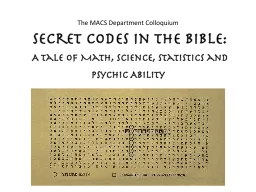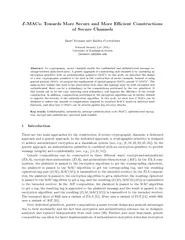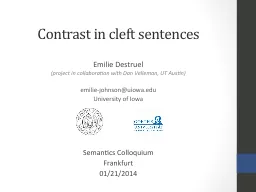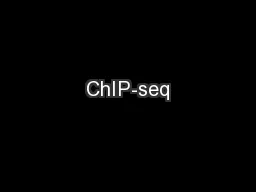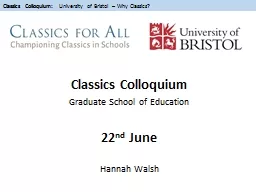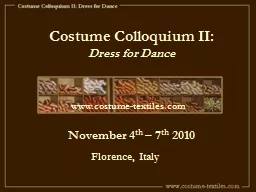PPT-The MACS Department Colloquium
Author : alexa-scheidler | Published Date : 2016-03-05
Secret Codes in the Bible A Tale of Math Science Statistics and Psychic Ability Michael Drosnins 1997 book The biggest news of the millenium maybe of
Presentation Embed Code
Download Presentation
Download Presentation The PPT/PDF document "The MACS Department Colloquium" is the property of its rightful owner. Permission is granted to download and print the materials on this website for personal, non-commercial use only, and to display it on your personal computer provided you do not modify the materials and that you retain all copyright notices contained in the materials. By downloading content from our website, you accept the terms of this agreement.
The MACS Department Colloquium: Transcript
Download Rules Of Document
"The MACS Department Colloquium"The content belongs to its owner. You may download and print it for personal use, without modification, and keep all copyright notices. By downloading, you agree to these terms.
Related Documents

